Many primate lovers wonder how gorillas can become so familiar with humans to an extent of allowing them in their presence. This article will help explain what goes on behind scenes to help make gorilla tourism and trekking possible. Gorilla live in the tropical forests of east, west and central Africa. There are two species of gorillas – That is the western and eastern gorilla. Each gorilla specie is divided further into two subspecies. The western gorilla is divided into the western lowland gorilla and the cross river gorilla. The eastern gorilla comprises of eastern lowland gorillas and mountain gorillas. All species of gorillas are currently considered endangered and are under the red list of the International Union of Conservation for Nature(IUCN). Their fragile status has raised eye-brows around the world and forced different organizations to take action and help support all programs/actions to conserve them.
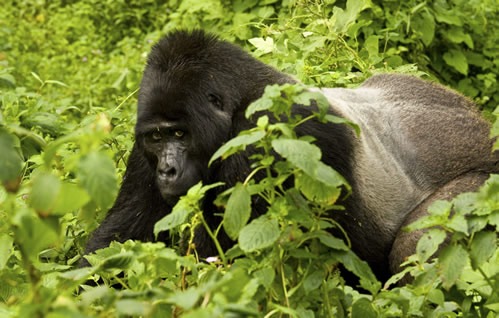 Mountain gorilla conservation in Uganda, Rwanda and the Democratic Republic of Congo has attracted more attention because of accessibility and the initial work begun by Dian Fossey. The three countries have turned all gorilla habitats into full national parks in order to protect the primates. Indigenous tribes like the Batwa pygmies were evicted from the parks to avoid any conflicts with the primates. In order to attract more funding and expose the plight of gorillas to a wider audience, gorilla trekking was launched by many countries in Africa. Tracking a particular gorilla group is only possible if they are habituated.
Mountain gorilla conservation in Uganda, Rwanda and the Democratic Republic of Congo has attracted more attention because of accessibility and the initial work begun by Dian Fossey. The three countries have turned all gorilla habitats into full national parks in order to protect the primates. Indigenous tribes like the Batwa pygmies were evicted from the parks to avoid any conflicts with the primates. In order to attract more funding and expose the plight of gorillas to a wider audience, gorilla trekking was launched by many countries in Africa. Tracking a particular gorilla group is only possible if they are habituated.
What is gorilla habituation? Gorilla habituation is the process of making gorillas used to humans in their presence. It is one of the important tools for gorilla conservation. Gorillas are naturally wild creatures and are wary of strangers in their midst including humans. In order to study or visit them, they need to become familiar to people near them. The process of habituating gorillas takes about 3 years and is conducted by primate researchers. It’s a gradual process where a suitable group is identified, followed on a daily basis and observed to understand their behavior/movement. The overall objective of the researchers is to win their trust so that they can allow them to be in their midst whenever they choose to. After the process is complete, the group can be open to tourists or gorilla trekking. It is important to note that Dian Fossey was very instrumental in discovering the different ways of making the primates comfortable with humans in their presence. She discovered that in order to be accepted by the group, one needed to first earn the trust of the dominant silverback. Once the silverback was okay with everything, the other group members would do the same.
Gorilla Habituation in Uganda
Uganda was the first country to start gorilla trekking in 1991. Uganda has half of the remaining 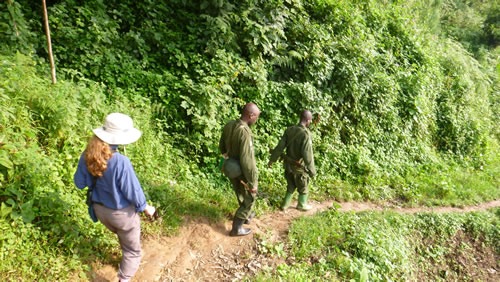 population of mountain gorillas hence making her the best country for gorilla trekking. The first gorilla groups to be habituated in Uganda were Mubare, Kaguliro and Katendegyere. However, the Katendegyere group disintegrated in 1998. From 11 members, they remained 3 as others crossed to the Democratic Republic of Congo. As time went on, more gorilla groups were habituated due to greater interest in gorilla trekking from international travelers. As we write this, Bwindi Impenetrable National park has 17 habituated gorilla families. It is the national park with the highest number of habituated gorilla groups in the world regardless of species.
population of mountain gorillas hence making her the best country for gorilla trekking. The first gorilla groups to be habituated in Uganda were Mubare, Kaguliro and Katendegyere. However, the Katendegyere group disintegrated in 1998. From 11 members, they remained 3 as others crossed to the Democratic Republic of Congo. As time went on, more gorilla groups were habituated due to greater interest in gorilla trekking from international travelers. As we write this, Bwindi Impenetrable National park has 17 habituated gorilla families. It is the national park with the highest number of habituated gorilla groups in the world regardless of species.
Because of the many wild gorilla groups still available in the park, the Uganda Wildlife Authority realized that it could introduce the gorilla habituation experience to tourists who are interested in 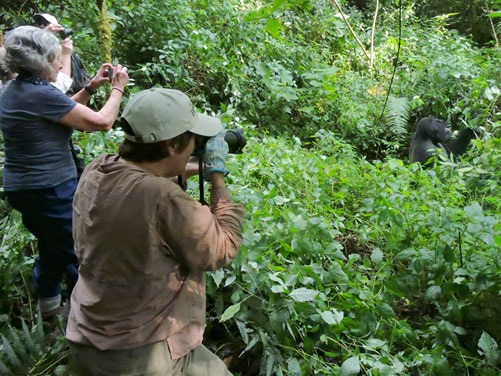 learning more about mountain gorillas – especially after taking part in standard gorilla trekking. During the gorilla habituation experience, tourists get to see what primatologists and researchers go through in order to habituate the primates. Unlike gorilla trekking, gorilla habituation experience involves observing the primates for 4 hours compared to the 1 hour allocated to standard gorilla trekkers. There are two gorilla families open for the gorilla habituation experience in Bwindi. These gorilla groups are all found in the Rushaga sector of Bwindi. They are known as the Bikyingi and Bushaho group. Permits for a 3 days gorilla gorilla habituation experience in Uganda cost $1500 per person and only 4 people may track each of the groups in a day.
learning more about mountain gorillas – especially after taking part in standard gorilla trekking. During the gorilla habituation experience, tourists get to see what primatologists and researchers go through in order to habituate the primates. Unlike gorilla trekking, gorilla habituation experience involves observing the primates for 4 hours compared to the 1 hour allocated to standard gorilla trekkers. There are two gorilla families open for the gorilla habituation experience in Bwindi. These gorilla groups are all found in the Rushaga sector of Bwindi. They are known as the Bikyingi and Bushaho group. Permits for a 3 days gorilla gorilla habituation experience in Uganda cost $1500 per person and only 4 people may track each of the groups in a day.
Gorilla Habituation Experience in Bwindi
What is gorilla habituation experience like? After a traveler has acquired a gorilla habituation permit directly from the Uganda Wildlife Authority or through a local tour operator, he/she travels to Rushaga sector where the two gorilla families are located. Briefing for gorilla habituation experience starts very 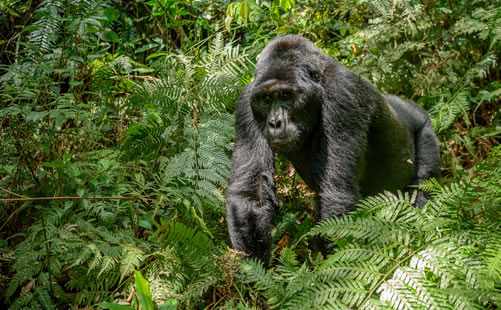 early in the morning and involves introduction to the research team, an overview of Bwindi forest and the gorilla groups. During the briefing, participants get to know about the gorilla trekking rules, what to expect and what to pack. On completion of the briefing, travelers are allocated one of the gorilla groups and a team of researchers to lead them to the forest. The team also includes armed Park Rangers and trackers who know where to find the family. Tracking takes between 1 to 2 hours before finding the group. Gorilla habituation experience is all about following the primates to learn about what they do in a normal day. You will know what they do after they wake up, how they feed, when they feed, what they feed on, their resting time and how they make nests. You will also learn the behavior of the different individuals in the group, the hierarchy and the role of the dominant silverback.
early in the morning and involves introduction to the research team, an overview of Bwindi forest and the gorilla groups. During the briefing, participants get to know about the gorilla trekking rules, what to expect and what to pack. On completion of the briefing, travelers are allocated one of the gorilla groups and a team of researchers to lead them to the forest. The team also includes armed Park Rangers and trackers who know where to find the family. Tracking takes between 1 to 2 hours before finding the group. Gorilla habituation experience is all about following the primates to learn about what they do in a normal day. You will know what they do after they wake up, how they feed, when they feed, what they feed on, their resting time and how they make nests. You will also learn the behavior of the different individuals in the group, the hierarchy and the role of the dominant silverback.
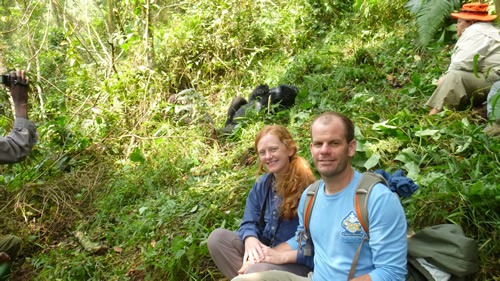 The researchers and park rangers will share a lot of information about the primates and what is being done to protect them in the world. This is where you will get to know about the key players in gorilla conservation such as the Dian Fossey Fund, the Gorilla Doctors and World Wide Fund for Nature. Bwindi Impenetrable forest is not just about gorillas. There is a lot to learn and see in the Park during the gorilla habituation experience. Watch out for smaller primates, chimpanzees (if you are lucky), birds, insects and reptiles like chameleons. Bwindi is also home to forest mammals and other amazing creatures.
The researchers and park rangers will share a lot of information about the primates and what is being done to protect them in the world. This is where you will get to know about the key players in gorilla conservation such as the Dian Fossey Fund, the Gorilla Doctors and World Wide Fund for Nature. Bwindi Impenetrable forest is not just about gorillas. There is a lot to learn and see in the Park during the gorilla habituation experience. Watch out for smaller primates, chimpanzees (if you are lucky), birds, insects and reptiles like chameleons. Bwindi is also home to forest mammals and other amazing creatures.
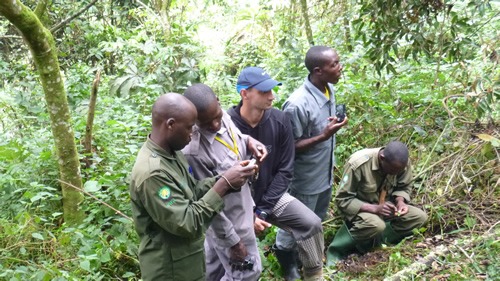 The packing list for gorilla trekking applies to the gorilla habituation experience. One will have a more comfortable experience if they pack a rain jacket and a hat/cap. It is also important to acquire a walking stick, proper hiking boots, long clothes to protect against thorns and sharp tree branches. Other important things to consider packing are an insect repellent, lunch, drinking water and energy drinks. You cannot forget to move with a good camera for photography and filming.
The packing list for gorilla trekking applies to the gorilla habituation experience. One will have a more comfortable experience if they pack a rain jacket and a hat/cap. It is also important to acquire a walking stick, proper hiking boots, long clothes to protect against thorns and sharp tree branches. Other important things to consider packing are an insect repellent, lunch, drinking water and energy drinks. You cannot forget to move with a good camera for photography and filming.
When is the best time for gorilla habituation experience? Gorilla habituation experience is carried out throughout the year in Bwindi Impenetrable National park. Some people believe that the activity is best 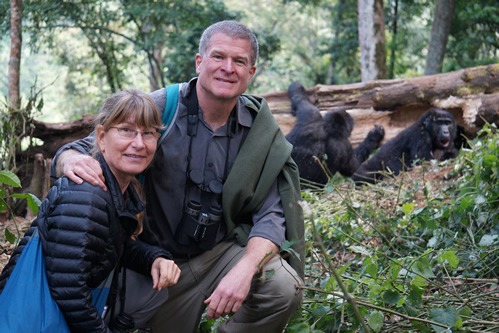 done in the dry season (December to the middle of March and June to October). The dry season is preferred for the activity because the forest trails are dry and the sky is bright hence allowing for proper visibility or photography. The wet season is also excellent because the primates have a lot to eat and they tend not to move too far away into the forest. It is also said that the primates look healthier and more beautiful during the wet season because there is plenty to eat. However, forest trails are slippery and it could rain for much of the day on some days. However, given that few permits are issued out for the gorilla habituation experience, we advise that one considers traveling during the low/wet season.
done in the dry season (December to the middle of March and June to October). The dry season is preferred for the activity because the forest trails are dry and the sky is bright hence allowing for proper visibility or photography. The wet season is also excellent because the primates have a lot to eat and they tend not to move too far away into the forest. It is also said that the primates look healthier and more beautiful during the wet season because there is plenty to eat. However, forest trails are slippery and it could rain for much of the day on some days. However, given that few permits are issued out for the gorilla habituation experience, we advise that one considers traveling during the low/wet season.
Gorilla Trekking Vs Habituation
Gorilla trekking habituation experience is a new activity compared to standard gorilla trekking which has been there for about 30 years now. The Gorilla habituation experience is more comprehensive and takes more hours compared to gorilla trekking. During the gorilla habituation experience, participants 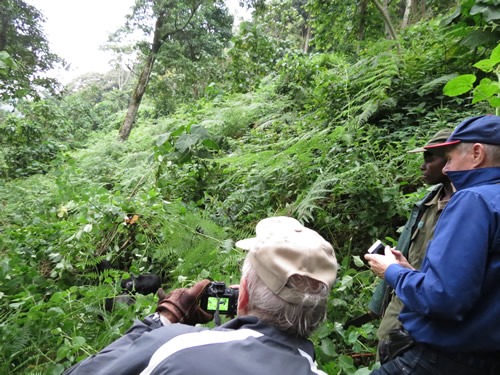 have 4 hours to observe the primates closely compared to the 1 hour for gorilla trekking. Only four visitors are allowed to go for the habituation experience per gorilla family in a day. With gorilla trekking, 8 people are allowed to track the primates. The gorilla habituation experience involves tracking wild gorillas unlike the semi-wild ones reserved for gorilla trekking. To elaborate further, gorilla groups under the gorilla habituation experience are not very comfortable with humans in their presence. It is also important to note that the gorilla habituation experience is led by a group of researchers and primatologists. This makes it more exciting and educative. Standard gorilla trekking in Bwindi Impenetrable National Park is led by park Guides and Rangers. What is the cost of the gorilla habituation experience? Gorilla Trekking is expensive but the habituation experience costs even more. The gorilla habituation permits costs $1500 while a normal gorilla permits costs $700 per person.
have 4 hours to observe the primates closely compared to the 1 hour for gorilla trekking. Only four visitors are allowed to go for the habituation experience per gorilla family in a day. With gorilla trekking, 8 people are allowed to track the primates. The gorilla habituation experience involves tracking wild gorillas unlike the semi-wild ones reserved for gorilla trekking. To elaborate further, gorilla groups under the gorilla habituation experience are not very comfortable with humans in their presence. It is also important to note that the gorilla habituation experience is led by a group of researchers and primatologists. This makes it more exciting and educative. Standard gorilla trekking in Bwindi Impenetrable National Park is led by park Guides and Rangers. What is the cost of the gorilla habituation experience? Gorilla Trekking is expensive but the habituation experience costs even more. The gorilla habituation permits costs $1500 while a normal gorilla permits costs $700 per person.


